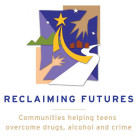
What We’re Here For: The Role and Purpose of Juvenile Detention in the 21st Century
|
Across the nation, perspectives on juvenile detention are changing. Several experts share how they believe modern juvenile justice is implementing more rehabilitative models and what the ultimate dividends may be for both young people and U.S. society as a whole
Mike Rollins, executive director of Coosa Valley Youth Services (CVYS) in Anniston, Ala., has been at the facility for more than 30 years. His experiences, however, aren’t just limited to working there. At 17, Rollins walked into CVYS for the first time. “I was engaged in drug use,” Rollins said.







